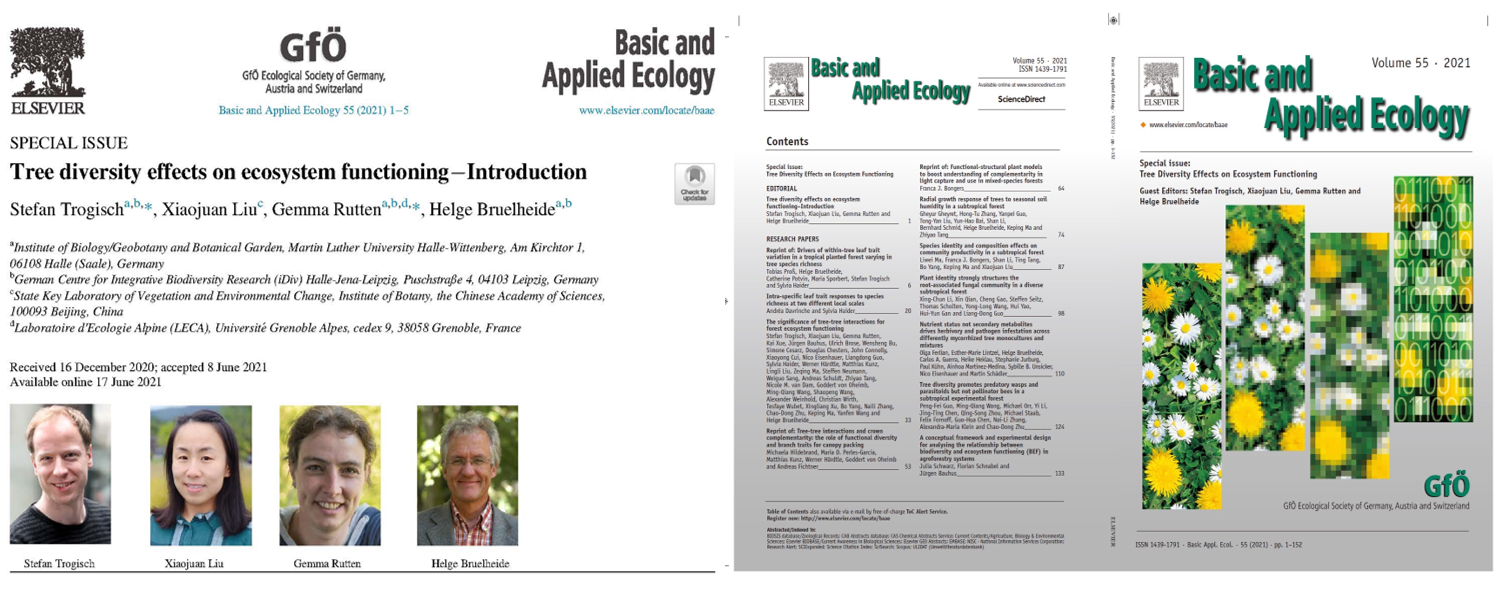Although the exceptional role of forests for human well-being is undisputed and widely acknowledged (Watson et al. 2018), a global downward trend in the global forest area persists (FAO and UNEP 2020). At the same time, remaining but also newly planted forests are facing intertwined and increasing pressures, arising for example from climate change with more frequent drought events (Schuldt et al. 2020), insect pests (Pureswaran et al. 2018; Canelles et al. 2021), defaunation and the thinning of trophic networks (Kurten 2013), or simply from over-utilization and fragmentation (Taubert et al. 2018). As a result, global forest degradation continues at unpredicted rates and jeopardize the capability of forest ecosystems to deliver essential ecosystem services (Grantham et al. 2020; Trumbore et al. 2015; Ghazoul et al. 2015). To reverse this trend, large-scale forest restoration and tree planting initiatives accompanied by the development of best practice guidelines have gained new momentum (Brancalion and Holl 2020; Di Sacco et al. 2021). However, achieving the global commitments represents a great challenge (Fagan et al. 2020). In this context, a fundamental understanding of forest ecosystems, in particular about the relationship between tree diversity and ecosystem functioning is essential to guide successful forest restoration and management. Over the last years, our understanding about the role of tree species diversity for key ecological processes has been improved tremendously. Substantial research progress has been archived by observational studies (Duffy et al. 2017; van der Plas 2019), and in particular by Biodiversity-Ecosystem Functioning (BEF) forest experiments that were established worldwide in the last 22 years (Paquette et al. 2018). These experiments have revealed that tree species diversity usually positively affects multiple ecosystem functions and services at the community scale, such as stand-level production (Huang et al. 2018; Grossman et al. 2018). However, our understanding of the underlying mechanisms, at which level they occur and to which extent they can vary along spatial and temporal gradients, is lagging much behind (Forrester and Bauhus 2016).
The contributions of this issue demonstrate how biodiversity effects act at different spatial scales, and that effects at one scale have impacts on other scales. Thus, understanding biodiversity effects requires cross-scale approaches. A better understanding of these cross-scale effects may help to improve forest management and reforestation practices (Baeten et al. 2019), and thereby, to achieve global tree cover restoration goals (Busch et al. 2019; Chazdon et al. 2017; Fagan et al. 2020). This special issue illustrates that particularly BEF experiments in forests provide a suitable platform to study such cross-scale effects of biodiversity ecosystem functioning relationships, this will help to uncover underlying mechanisms and to anticipate the consequences of ongoing biodiversity loss.


The special issue from: https://www.sciencedirect.com/journal/basic-and-applied-ecology/vol/55/suppl/C

